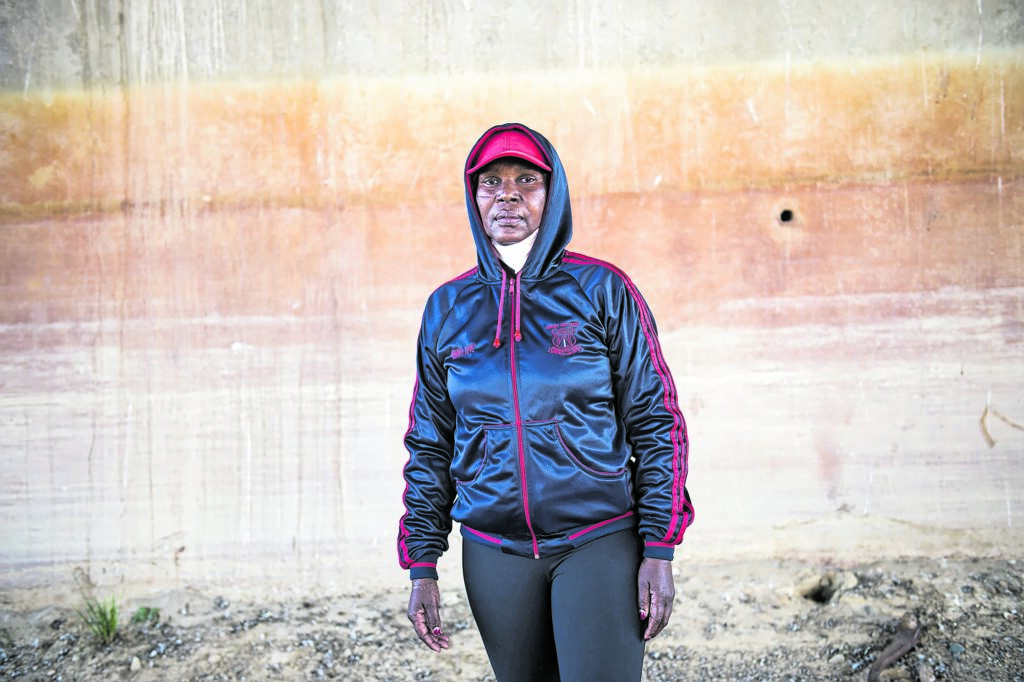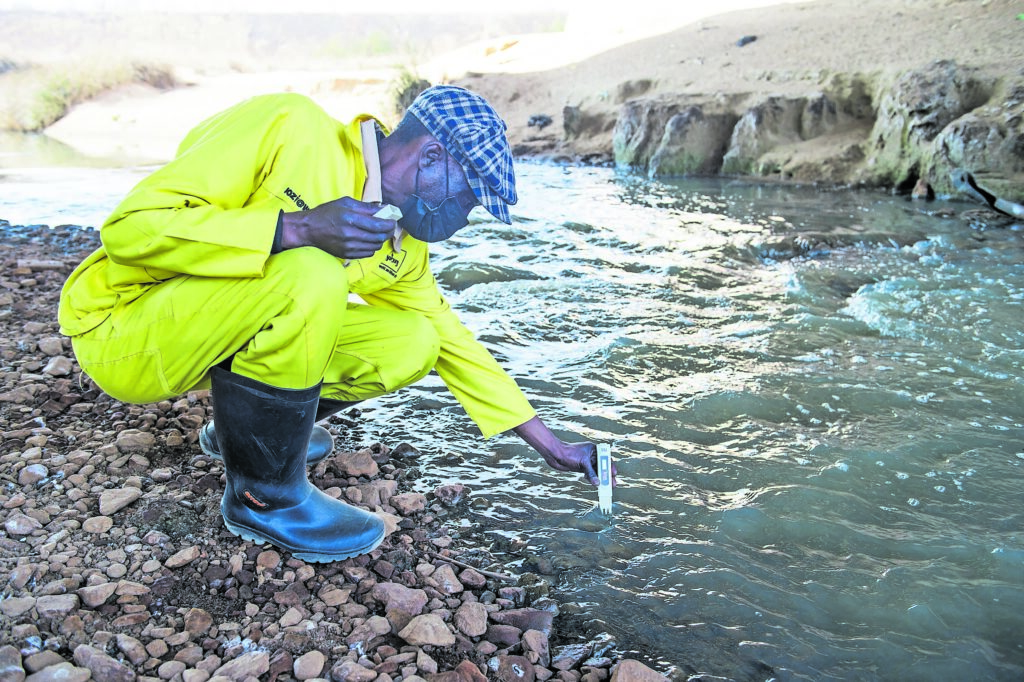Contaminated: Jo’burg residents use the city’s streams, such as the Klipspruit that runs through Soweto and joins the Klip River, for religious and other social functions. (Photo: Delwyn Verasamy/M&G)
Tiny Dlamini gingerly hops across a cluster of slippery rocks towards the Klipspruit in Soweto. The stream, which is covered in thick curls of sewage foam, reeks. But this foul torrent of human waste is not the major problem, says the environmental activist. “Yes, you can smell the sewer, but that’s from the pipe bursts now and then. The greatest polluter here is the mines.”
Mines have been responsible for contaminating the Klipspruit, a tributary of the Klip River, for more than a century, says Dlamini as she points to the fluffy whitish-yellow soil from mining activities on the banks of the stream.
“This river was very important to us — people used to live from these rivers. Now, there’s no aquatic life, there’s nothing.”

A new study, by a team of researchers from the University of the Witwatersrand shows how run-off from the Central Rand goldfield discharges into wetlands along the Klip River. These wetlands are important sinks for toxic pollutants. The run-off and groundwater emanating from the Witwatersrand Basin is highly contaminated with toxic metals, according to the study, which was published in the South African Journal of Science. The seepage of acidic water from mine waste dumps is considered the primary source of contamination.
The researchers describe how gold mining gave rise to the city of Johannesburg and formed the foundation of the country’s economy for more than a century, but today presents one of the largest threats to South African water resources and also affects human health.
“Waste from gold mines is considered to constitute the largest single source of waste pollution in South Africa and contributes significantly to acid mine drainage, which remains one of the country’s most serious environmental and socioeconomic issues,” they say.
The extensive accumulation of metals in the Klip River wetland reflects the contaminant legacy associated with gold mining on the Witwatersrand.
 Dead water: Environmental activist Tiny Dlamini bemoans the fate of the polluted Klipspruit. (Photo: Delwyn Verasamy)
Dead water: Environmental activist Tiny Dlamini bemoans the fate of the polluted Klipspruit. (Photo: Delwyn Verasamy)
The study highlights the effectiveness of natural wetlands in trapping vast quantities of toxic pollutants and remediating downstream waters.
“From this perspective, the Klip River wetlands are undoubtedly some of the most valuable natural assets in Johannesburg,” it says.
Contaminant plumes associated with mine dumps will probably persist for decades.
Preventing further deterioration of the Klip River wetlands is critical for safeguarding water sources in the region. But wetlands have the potential to release trapped pollutants, particularly if the natural biogeochemical conditions favouring metal sequestration are disrupted.
Environmental activist Mariette Liefferink, a member of the Klip River Forum, says that almost 20 years ago, more than 270 tailings storage facilities — dams used to store mining byproducts — were estimated to exist in the Witwatersrand Basin, covering about 400km2 in surface area.
“These dams are mostly unlined and many are not vegetated, providing a source of extensive surface and groundwater pollution,” she says. While the wetlands in the Klip River provide some protection to downstream water users, they cannot be relied on “ad infinitum”.
 Charles van der Merwe tests the water in the stream for dissolved solids. The whitish-yellow soil from mining activities is evident along the banks of the stream. (Photo Delwyn Verasamy)
Charles van der Merwe tests the water in the stream for dissolved solids. The whitish-yellow soil from mining activities is evident along the banks of the stream. (Photo Delwyn Verasamy)
“Unfortunately, by concentrating metals, the wetlands themselves begin to pose a hazard and it raises concern about their ability to cope with the pollutant loads flowing into them over a period of many years,” says Liefferink.
Dlamini shakes her head as she watches a woman leave after being baptised in the Klipspruit’s murky waters.
“People believe this water is holy. But it’s very dangerous,” she says.